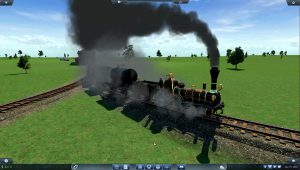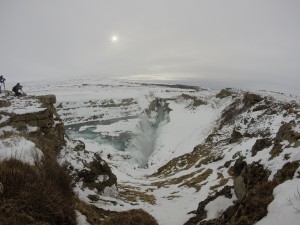Borders of borderless open worlds
During my ongoing literature review I often discover interesting facts about things I’ve never thought about. Sometimes I can connect these facts with my own observations: The result is mostly a completely new idea why things are as they are. Maybe these ideas are new to you, too. Therefore I’ll share my new science based knowledge with you!
This week: This time, I think about the necessity of implementing believable world borders in order to avoid breaking a game’s immersion.
Increasing the immersion of a computer game can often be achieved by allowing players to freely explore the virtual worlds. Open world games do not force the players to move in a particular direction by only providing a linear path through the game world. Instead, those games enable players to wander around and even reach places that have no direct connection to the narration. Naturally, depending on the type of the game, players are still guided by quests and other game goals that, on completion, advance the game’s story, but between those tasks, players are free to explore the game world on their own. This approach gives players the feeling of freedom thus greatly increasing the immersion of the game.
However, open world games, unless they rely on a procedurally generated terrain, are not endless virtual worlds. At some point, a player will reach the end of the virtual environment when constantly travelling in the same direction. In order to avoid breaking the immersion of the game when the player reaches the end of the world, game developers need to implement believable world borders that match the setting of the game. For instance, in a post-apocalyptic world a world border can be implemented by designing an area that is highly contaminated and kills the player within a short amount of time. Other prominent solutions are high mountains, blocked roads or deep water which can not be crossed by the players.
Unfortunately, there are also games that intend to provide the players with immersive environments but fail at achieving this due to bad implementations of a world border. The probably most disappointing and immersion breaking approach is to implement invisible walls. Once a players reaches such a wall, he can not proceed any more in the desired direction and just stops moving. Other bad solutions are when the player instantly dies or gets teleported back to a place inside of the game world.
The latter approach is used in DiRT Rally which is not directly an open world game but tries to provide the players with an authentic environment. Due to the nature of rallying, a player easily can slide off the roads and hence needs a way to return back to it in order to continue with a rally stage. Unfortunately, DiRT Rally uses an unpredictable way of forcing the players back to the roads. In general, players have 15 seconds to return back to the road before getting reset. This already can become frustrating when the player almost has reached the road again and suddenly finds himself in a completely different position. However, at some places the game instantly resets the player although the 15 seconds have not passed yet. Those moments then result in a high degree of frustration as it completely breaks the immersion of the game. A better solution would be to not constrain the players with time limits and instant resets. Instead, players should be able to find their way back to the road – the maps still could have a border in form of impassable terrain – and only be required to manually reset their cars when they are completely stuck. This would greatly increase the immersion, especially as the stages must be completed within a given amount of time (15minutes for short stages and 30 minutes for long stages).
As a conclusion, implementing an authentic and immersive world not only requires the design of a good virtual environments but also demands the implementation of believable world borders.


